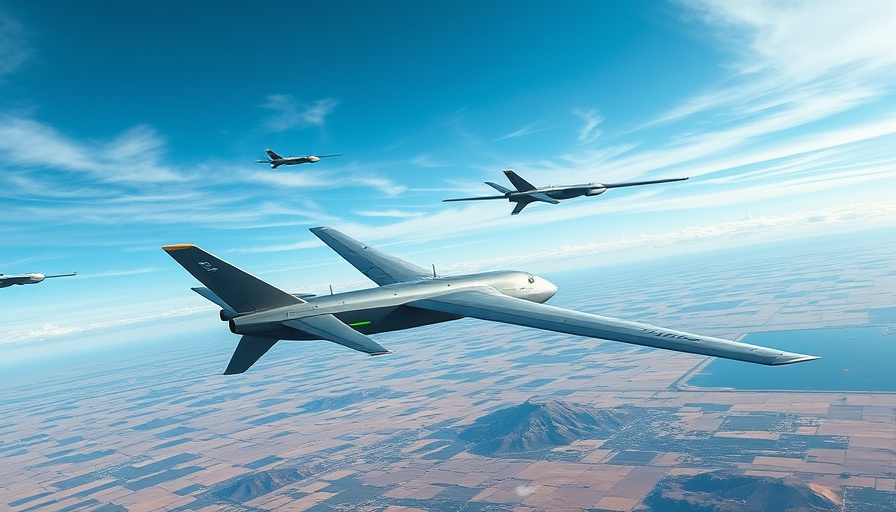
Understanding the Need for Trust in Drone Technology
As technology in military aviation rapidly evolves, U.S. Navy fighter pilots must learn to trust their new drone wingmen, referred to as Collaborative Combat Aircraft (CCAs). Lt. Cmdr. Mark “Tugboat” Jbeily highlights that this trust is fundamental, paralleling the trusting relationships pilots have built with their human counterparts over the years. He emphasizes that trust in flying, whether with a person or a machine, will dictate how the Navy integrates and utilizes these advanced unmanned systems in both training environments and operational scenarios.
The Role of Collaborative Combat Aircraft (CCAs)
CCAs represent the next frontier in military aviation, enabling a seamless partnership between manned and unmanned aircraft. The integration of these drones into air wings is a critical component of the Navy's strategic vision. Jbeily's comments underscore the ongoing conversation about the specific characteristics of these platforms, designing them to carry out missions alongside human pilots while ensuring reliability, predictability, and performance consistency. For example, if a human pilot knows their drone will respond accurately in line with expected behaviors, it enhances their operational effectiveness and overall mission success.
Importance of Live, Virtual, and Constructive Training
For pilots to gain confidence in CCAs, the Navy is exploring training methods that incorporate live, virtual, and constructive (LVC) methodologies. By blending real-life scenarios with simulation, pilots can interact with drones in various operational contexts before facing real combat situations. This approach allows aviators to practice trust-building exercises organically, addressing potential fears or uncertainties they may have when flying alongside autonomous machines. The Navy aims to create training regimes that narrow the trust gap present in current unmanned airmanship.
Counterarguments and Diverse Perspectives in Aviation Autonomy
While many welcome advancements in drone technology, skepticism remains prevalent among aviators regarding unmanned systems. Critics argue that relying on automated aircraft could lead to unforeseen consequences in high-stakes situations where human intuition proves invaluable. Jbeily acknowledges these concerns, asserting that a solid integration strategy involving pilot input is crucial. By fostering understanding and collaboration, future endeavors can address these critiques and enhance the reliability of collaborative manned and unmanned missions.
Future Trends in Military Aviation
As military technology continues to innovate, the future of air combat might look significantly different than today. Jbeily forecasts an imminent shift toward more dependable and robust drone interactions as technological advancements unfold. Apart from CCAs, there may be additional applications in intelligence, surveillance, reconnaissance, and payload delivery, all of which hinge on mutual trust between pilots and autonomous systems. As these drones evolve, the need for rigorous training and trust-building in collaborative operations will only become more relevant.
In conclusion, the evolution of military aviation hinges on trust—the trust between human pilots and their drone counterparts. As the Navy invests in CCAs and innovative training methodologies, establishing a robust framework of trust will ensure both safety and effectiveness in future combat scenarios. Understanding these dynamics will shape the discourse surrounding emerging technologies in military aviation.
 Add Row
Add Row  Add
Add 




Write A Comment